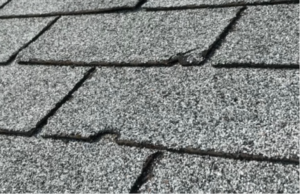
Hey there. We are assuming you are here for 1 of 3 reasons.
- You live in an old house and your doors are drafty as all get out; you wonder if it’s possible to fix the issues without completely reinsulating, installing new doors/windows or fixing flooring issues
- You live in a new construction house and cannot figure out why you have so many drafts; you may be concerned about construction defects.
- You’re simply looking for some tips to easily fix a draft coming in under your door
If you are not one of these 3 scenarios, don’t worry, there is a lot of juicy information packed into this blog about all things “door drafts”.
Unlike most other blogs on this topic, we will give you the actual reasons your door may be drafty as well as several ways to fix the issue (Yes, including door draft stoppers). If you are looking for temporary solutions, we’ve got you covered. If you want a permanent solution, we have those too.
Ready? Let’s get started.
What causes a drafty house?
There are many possible culprits for drafty homes. Improperly installed or failing doors can definitely be one of the biggest offenders. Why? Well doors are easily the largest openings in the house. When they are not functioning properly, huge amounts of air is allowed to pass in and out of the home. It’s a bit like heating your house with the windows open in the middle of winter. Can you imagine the heating bills? Yikes.
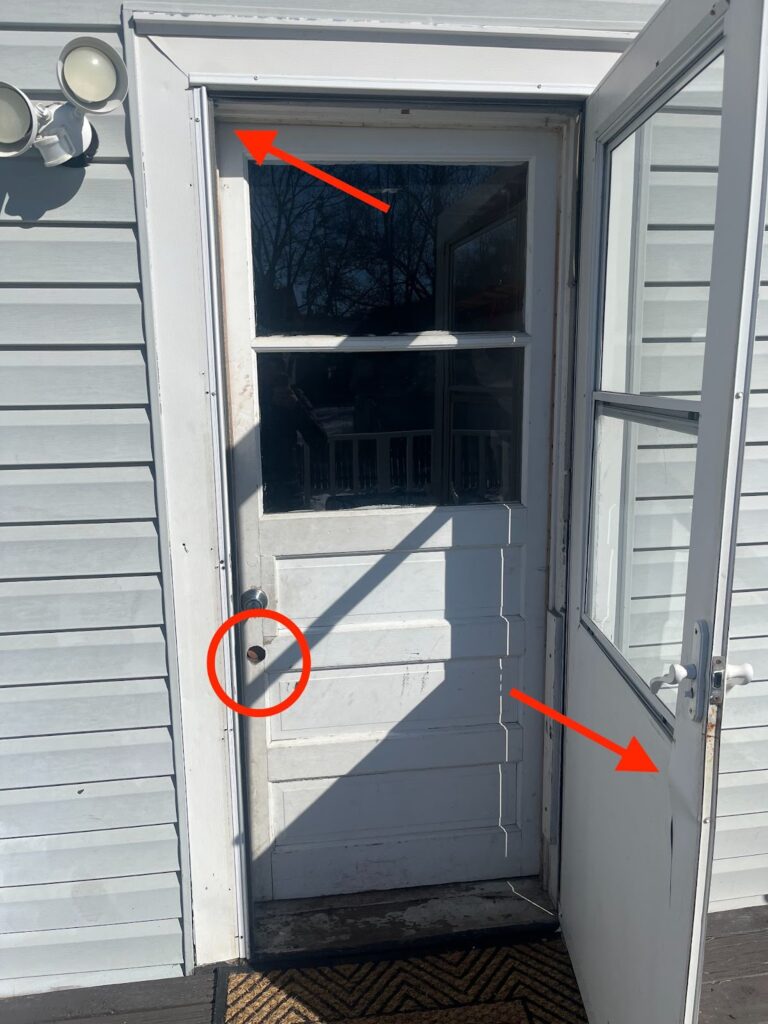
*This door is allowing air to flow into the conditioned living space. The exterior screen door is also cracked.
So, what can be done? The permanent fix is for the doors to be properly installed and functioning correctly. We will discuss this in more depth later on in this blog post. Temporary solutions, such as door draft stoppers, will also be discussed.
Ok, so what if you know the doors in your home are up to par? Well there could definitely be other reasons for your drafty home issue. Examples could be: old windows, poor attic insulation (this includes unsealed attic bypasses) and roof damage. These possible issues are out of the scope of this blog. In order to know exactly what your problem is, consider hiring a structural engineer. Keep in mind that not all structural engineers are knowledgeable when it comes to energy efficiency. Be sure to ask them about their specific background prior to hiring.

Get a free quote on your project!
Ready to start your project? Reach out to Complete Building solutions and get a quote absolutely free.
Reasons for drafty doors-
Now that we know poorly installed doors can be at the root of high energy bills and cold homes, let’s talk about what makes a door drafty in the first place.
1. Door alignment issues-
Before running out and buying weather stripping, it’s a good idea to check the alignment of the door itself.

Common door alignment issues:
- A worn door frame resulting in doors pulling away from hinges
- A door that is too small for it’s frame, leaving big gaps
- An interior door installed on an exterior frame
- Settlement in a home leading to sticky doors
Some indicators that the above issues are in play:
- Improperly installed hinges
- Missing or loose screws in door hinges
- The door sweep is installed wrong
- A door threshold that is not screwed or bolted down tightly
- Warped wood doors
- Living in a climate with extreme temperature swings
- Lots of movement in the foundation or footings
- Bowing floors
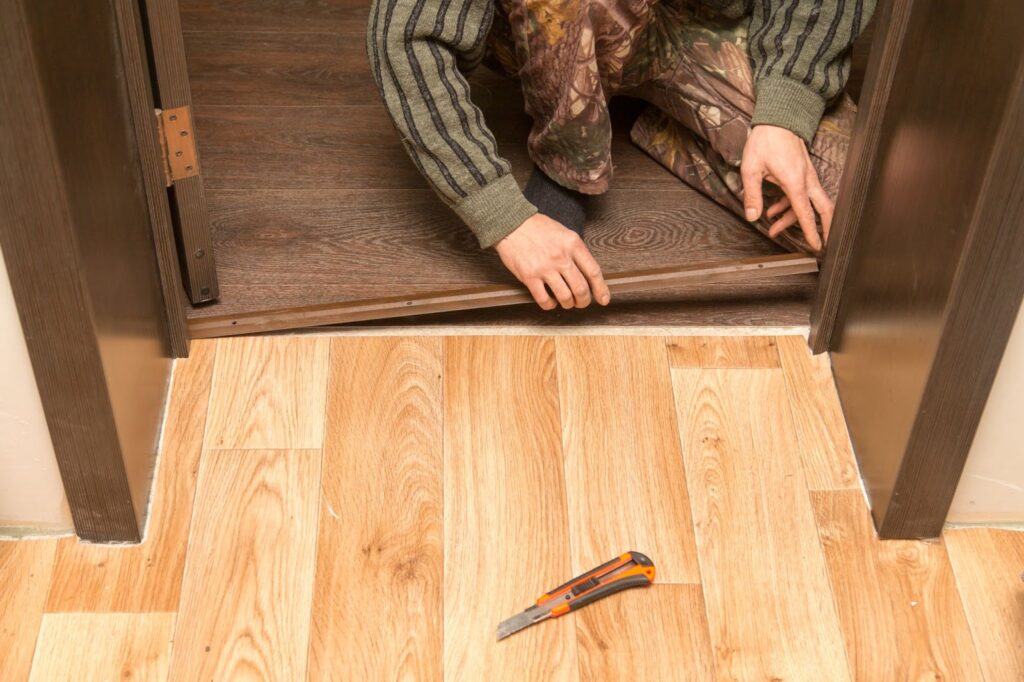
So, if your door is not fitting correctly, it’s important to start here.
Below we’ve linked a few videos that are helpful for fixing these issues on your own. On the other hand, if you do not want to tackle this project on your own or if you just purchased a new construction home and think your doors were installed incorrectly, definitely reach out to your contractor.
Here’s a great article on fixing your door frame. Here’s a video on fixing big gaps between door frame and door.
Door alignment issues from the freeze thaw cycle-
If you live in the northern states, it’s common to see doors go out of alignment. The freeze thaw cycle that comes with winter can create movement in the foundation or footings leading to doors that don’t align properly.
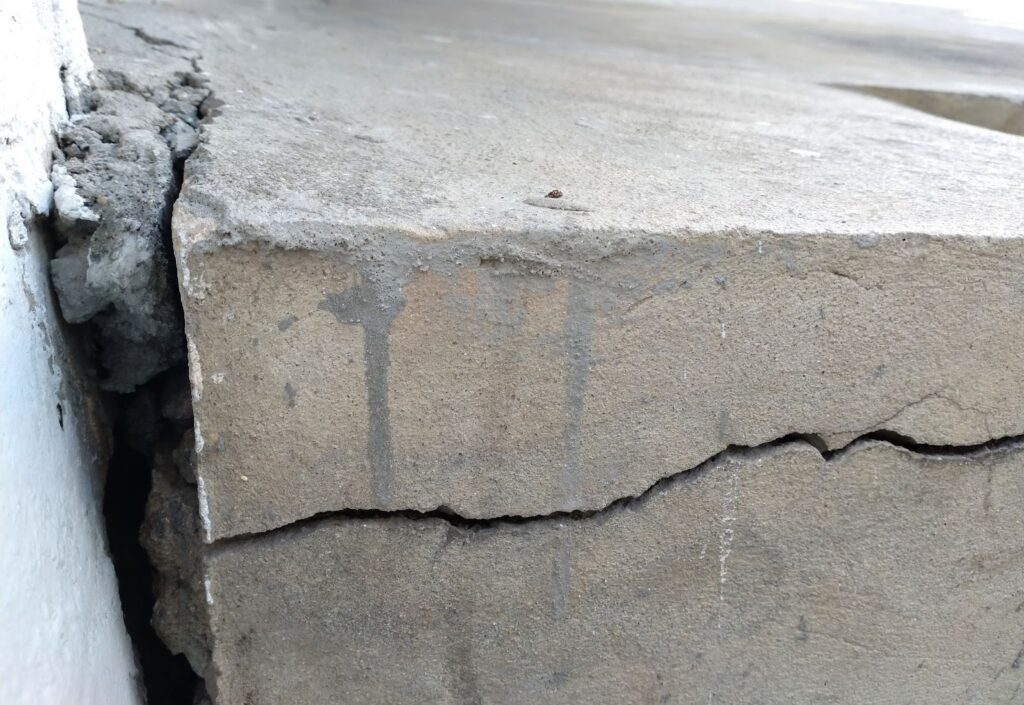
One of the best ways to minimize these issues is to ensure your property has a good water management system in place. In a nutshell, make sure your house has gutters, downspouts and extensions that are successfully leading water away from the foundation.
On top of this, it’s important to make sure you have a positive slope around your house. What does this mean? It means that the soil is running water away from the house, not trapping it close to the foundation. The rule is a 6” drop in elevation within the first 10 feet of the foundation (International Residential Code).
If you live at the bottom of a hill, creating a positive grade can be challenging. There are solutions for things like this. Some structural engineering firms will have knowledge on fixing grading issues as well as many landscaping companies.
Door alignment issues from humidity-
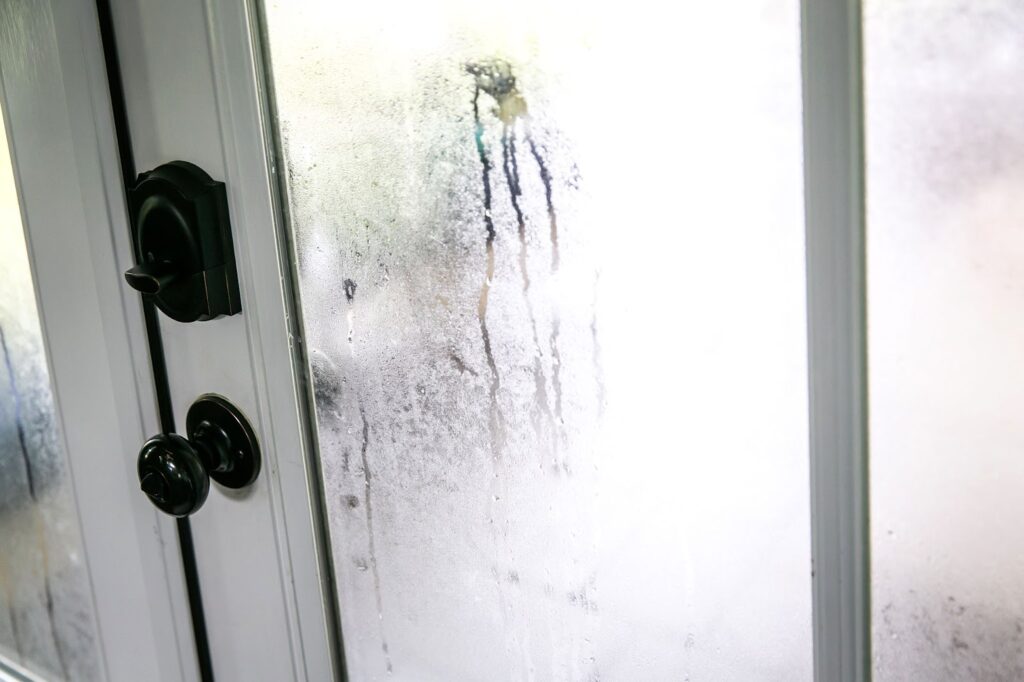
Did you know that wood expands and contracts based upon moisture content and the temperature of its surroundings? A good example is an old wooden dresser. Ever noticed that the drawers shut perfectly in the winter, but will not close in the summer? This is because warm air holds larger amounts of moisture than cold air. This moisture in conjunction with high temperatures causes wood to swell.
How does this relate to your door alignment issues?
The more moisture content in the house, the more wood floors will swell or show signs of cupping (when the edges raise higher than the middle of the wood boards). So, you see, if you have expanding building materials, it’s easy for doors to become misaligned. If you need to repair your door yearly, it may be worth hiring a professional to help you lower the relative humidity in your home. Air conditioners and dehumidifiers can help greatly here to prevent changes in the flooring.
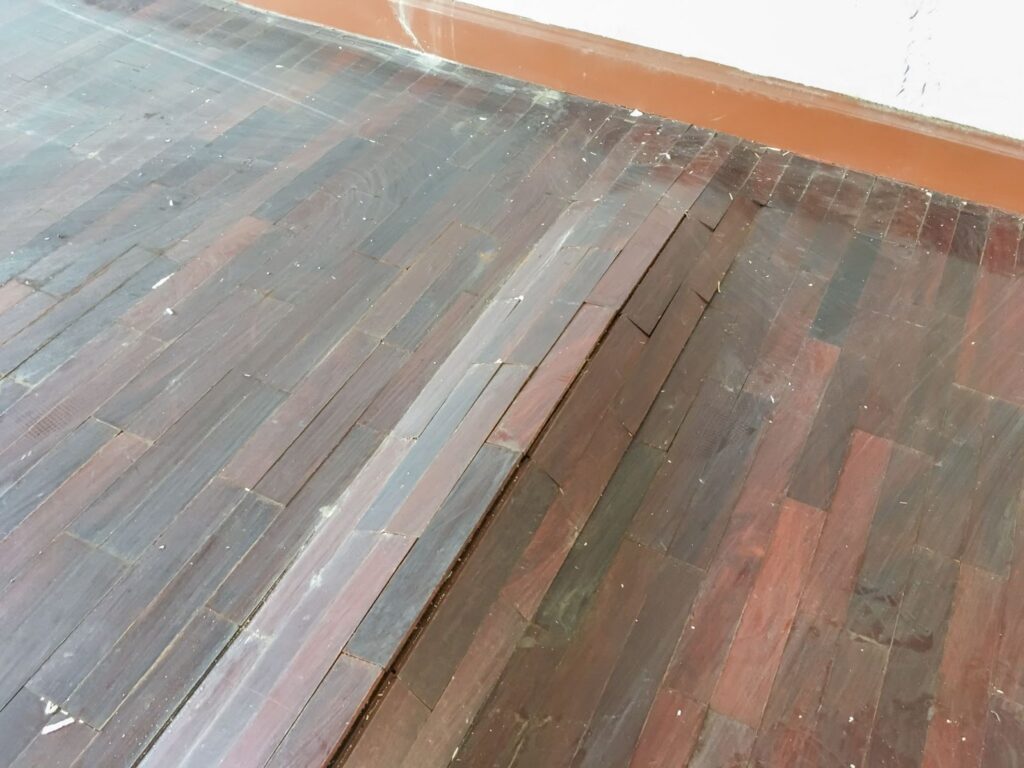
If you have determined that your drafty house is not due to a misaligned door, read on to learn about weatherstripping.
2. Weatherstripping Issues-
Any large issues with the door installation should be dealt with. Once these issues are fixed, it’s time to think about weatherstripping.
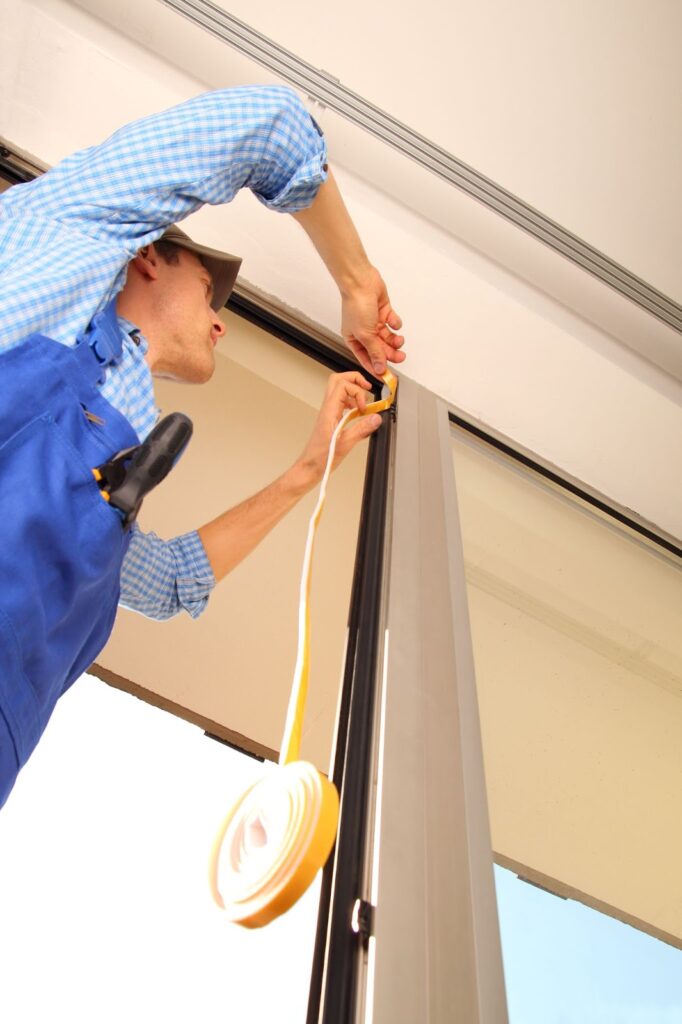
What is weatherstripping?
If you have no idea what weatherstripping is or how to use it, watch this video before reading any further.
Ok, did you watch the video? Now you have an idea of what we are talking about. Here’s the plan.
First, Measure around your door to determine how much weather stripping you will need. Next, choose the weatherstripping material you want to use. Here are a few options.
- V Strip (Tension Seal)- This plastic or metal strip is bent into a “V” shape and is very effective at keeping air from moving into the home. It is typically plastic, self sticks and can be cut with scissors. It can be installed by peeling and sticking or with finishing nails.
- Felt- Felt is an extremely common weatherstripping option that is sold in rolls. It is inexpensive and lasts about 1-2 years. It can be installed using glue, tacks or staples.
- Foam tape- This product can be made from EDPM rubber (similar to what is used on flat roofs) or from open/closed-cell foam. Foam tape is often chosen for doors with irregular shaped cracks because it comes in varying widths and thicknesses.
- Door sweeps (aluminum, steel or plastic)- A door sweep is a flat piece of aluminum, stainless steel or plastic that is fitted with a vinyl sponge attached. Its job is to keep air from getting in or out in the space between the door and threshold. The door sweep is an easy install. Just measure the door, cut the door sweep and install with screws.
- Tubular Rubber, Vinyl, or Silicone- There are many options here. Rubber and vinyl selections come with a metal or wood mounting strip. It’s definitely not the easiest material to install, but can last up to 5 years. The quality is superb.
Once you’ve selected the right material for your door, watch some youtube videos on how to properly install the weatherstripping.
3. Lack of Insulation in early 1900 homes and what to do-
#3 is a not-so-obvious reason your door may be letting air sneak into the conditioned part of the home. Here’s a fun fact, homes built in the early 1900’s were actually built to be drafty. And because of this, it’s rare that you will find insulation around the doors and windows. A lot of this has to do with the fact that this era was smack in the middle of many wars. This made money and materials hard to come by at times. Many of these homes even utilized newspapers or vermiculite as insulation.

It’s interesting because having a drafty house does come with its set of issues such as cold drafts, high energy bills and building material shrinkage and expansion. Of course, none of these things are good.
But, problems can also occur in very airtight homes. During the 1970’s homes started to become much more energy efficient. However, building science at the time did not account for poor ventilation which can lead to moisture build up and mold. Modern day building science has greatly improved, but it doesn’t mean all airtight homes were built correctly. When homes can’t breathe, problems arise.
To get back to the topic of this section, if you live in an old home, chances are, you do NOT have insulation around your door (or windows).

What can be done about this?
Well, you can definitely add insulation around the doors and windows. Not just any insulation.
PRO TIP- The best stuff out there is minimal expanding spray foam insulation. That’s what you will want to use.

Here’s a video of us inspecting a new construction home. In this particular video we pulled the trim off the sliding door to expose the lack of insulation around the door.
Drafty doors in new construction homes-

Are you having drafts in your new construction home? To clear things up right away, no, this is not acceptable. These drafts could be coming through the main entry doors or even through sliding glass doors or french doors.
First, make sure the doors were installed correctly. If you see light coming through the frame from the exterior, or you’re noticing large drafts, there’s a chance the door is not level in the frame. If your doors were literally just installed and these issues are happening, it’s probably that.
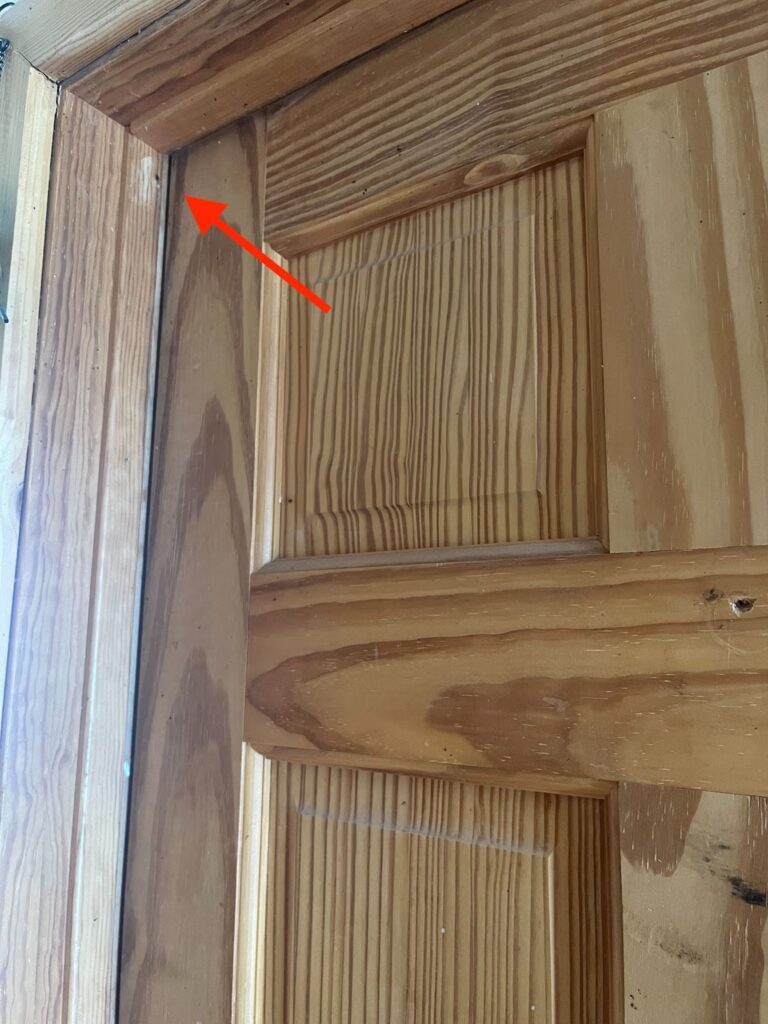
If the door was installed wrong….call the contractor who installed it. The solution may be as simple as adjusting the door jamb to help level the door in the frame. However, if there are several problem areas, the door may need to be reinstalled completely or even replaced.
The second thing to consider is the more common issue of improperly installed weatherproofing which we talked about earlier. This weatherproofing provides a seal which helps to keep exterior air outside where it belongs. How can you tell if your weatherproofing was installed incorrectly? Well, usually you’ll notice some gaps around the door or maybe even in between the frame and the wall. This can be fixed by calling the person who installed it or tackling the project yourself.
One of the last things to consider is what we talked about in the section above….lack of insulation. If you pull the trim off do you see insulation where the door meets the sheetrock and the framing? If not, this could be the cause of your drafty door.
Now let’s talk about the most common temporary solution to your drafty door.
Are door draft stoppers considered weatherproofing?
Yes, when used correctly, door draft stoppers are a type of weatherproofing. They block the outside air from getting inside and vice versa. This can stop drafts and save you money on your energy bills.
Why would you want to use one? Well, most people choose to use door draft stoppers because they are so easy to install or to throw in front of a door.
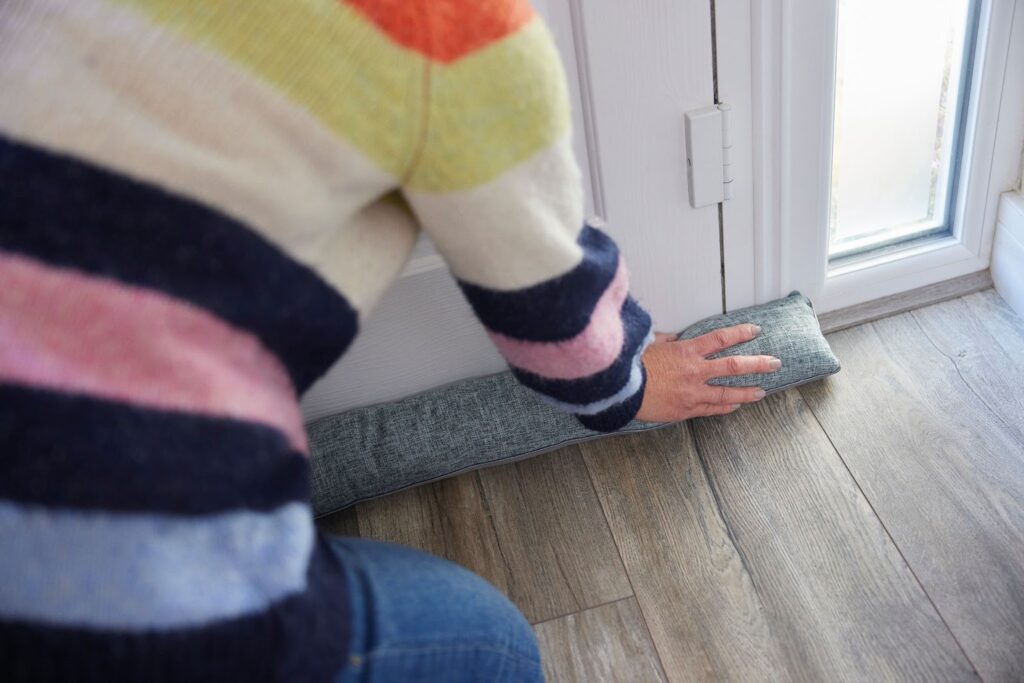
Types of door draft stoppers-
There tends to be some confusion around what specifically a door draft stopper is. In general, its job is to stop drafts from coming inside the home. Because weatherstripping and door sweeps also do this, what a door draft stopper is or isn’t can become confusing.
Here are the three most common types of door draft stoppers:
- Slide under door draft stopper-
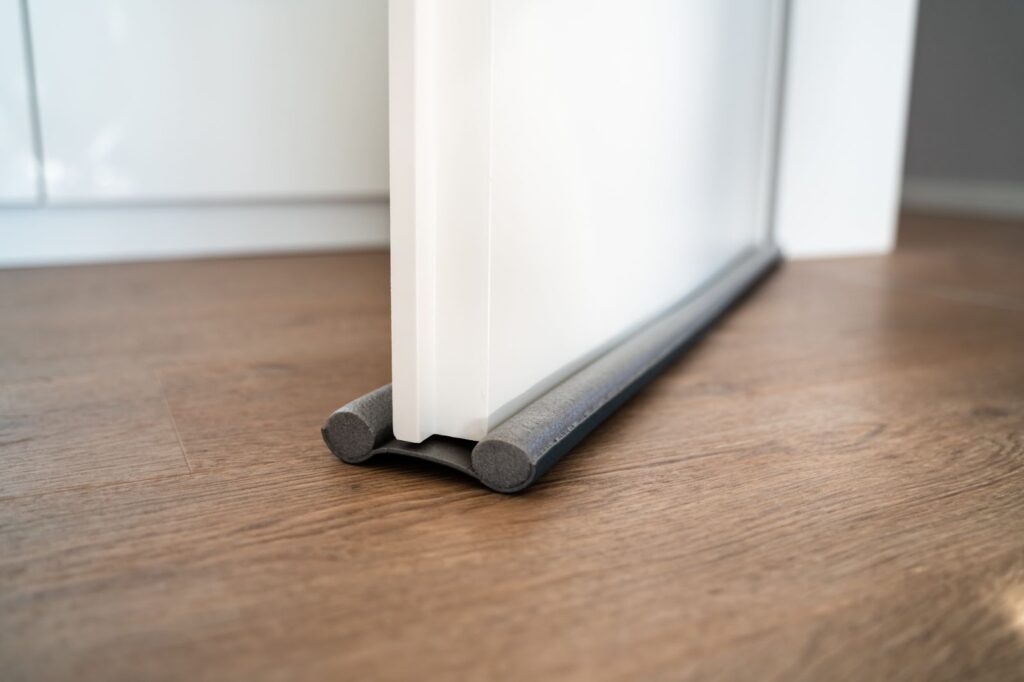
Slide under door draft stoppers “slide” underneath your door. They are nice because they block the air on both sides of the door. Typically, they are made of fabric filled with foam. People tend to like these door draft stoppers because they don’t require an “install”. You simply slip it under the door and it’s ready to go. One complaint of this type of door draft stopper is that it may not be very appealing visually and can get dirty.
- Strip door draft stopper-

Strip door draft stoppers tend to be made of silicone or plastic and can be adhered to the door with ease. They are nice because they keep clean and are less bulky than other options. Due to their thin nature, they may not have as many soundproofing benefits as other forms of door draft stoppers.
- Snake door draft stoppers-
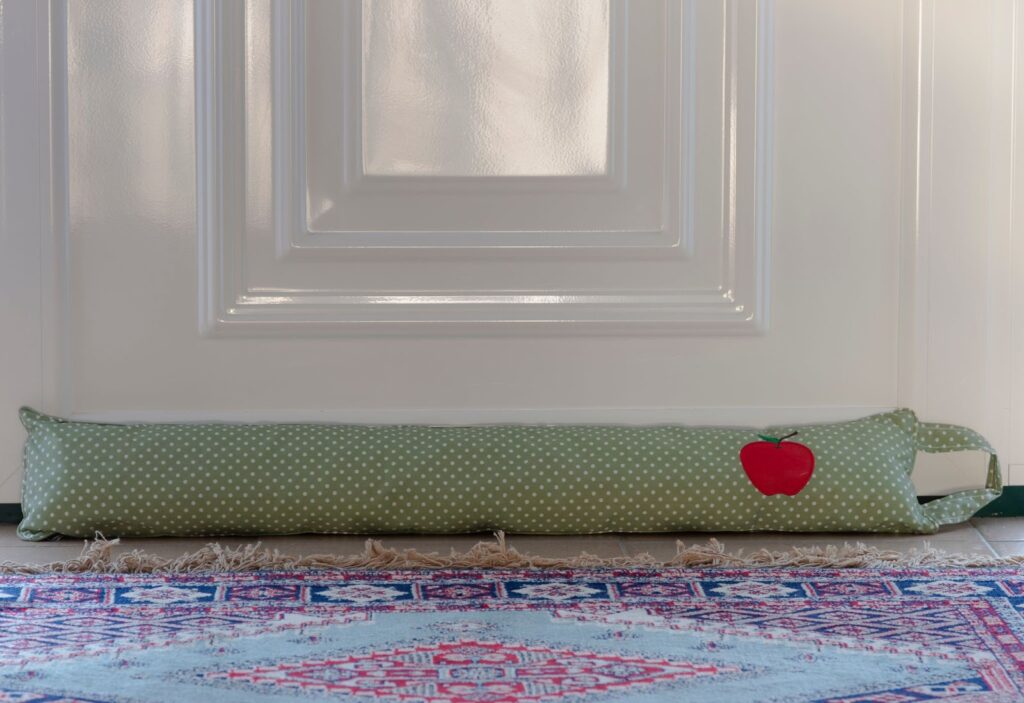
Snake door draft stoppers are what most people think of when they hear the word door draft stopper. It’s a piece of fabric filled with foam or other materials and is simply placed on the inside of the door. Some come with tacks or an adhesive but most people simply move the door draft stopper back to position after opening the door. This is one downfall along with the fact that they can be bulky and get dirty.
Do door draft stoppers save energy and money?

As we’ve talked about, door draft stoppers can stop a ton of air from leaking into your home. By stopping the flow of air in and out of the conditioned living space, energy and money will be saved. It’s very common for home owners to see a significant drop in energy bills simply by using door draft stoppers.
We recommend that you tackle some of the more permanent fixes too such as making sure your door is aligned in the frame properly and that weatherstripping is installed correctly.
If your door goes out of alignment year after year, it may be time to look into grading around your foundation. The freeze thaw cycle can cause structural movement in a home leading to misaligned doors. Driving water away from the foundation is crucial for minimizing this issue. Lowering relative humidity in the home is another component. If these underlying issues cannot be addressed, then a door draft stopper is a good temporary solution that will save energy and money.
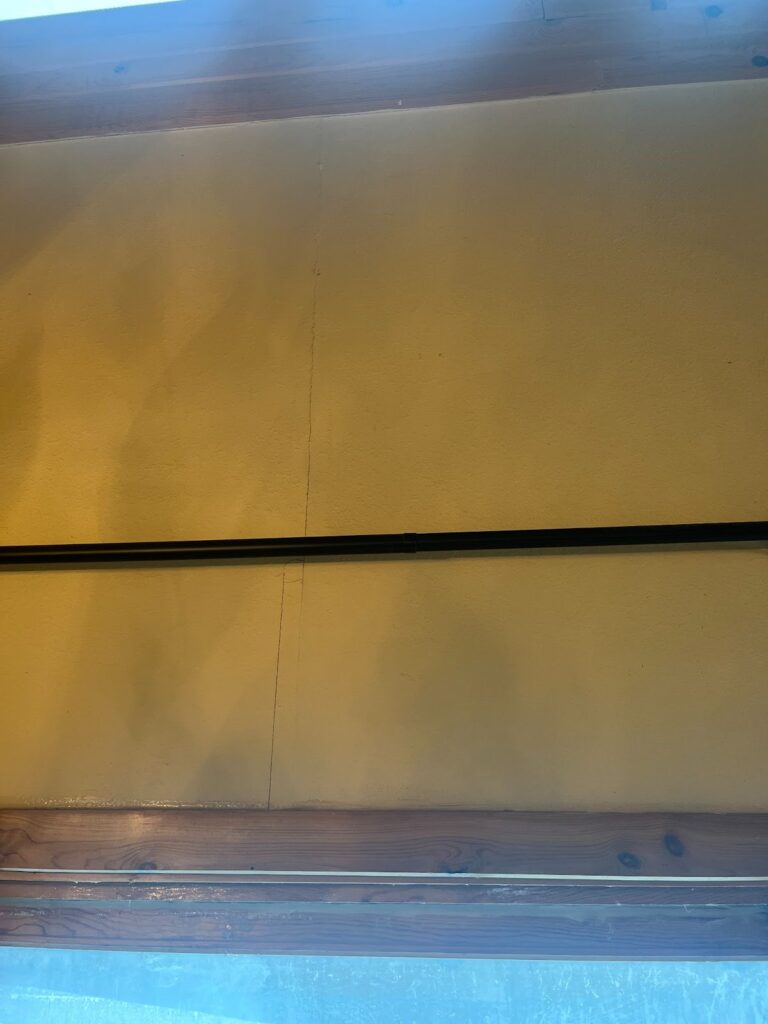
We hope this blog provided you with some information on why doors are drafty and how to fix the issue. Door draft stoppers can be a temporary option to keep drafts out of your house. However, looking into longer term solutions is the way to go in order to preserve your building and reduce energy loss and high energy bills. If you are concerned about your drafty door, possible foundation movement, wall cracks or other issues, please feel free to reach out to us at 763-544-3355.

